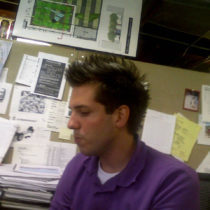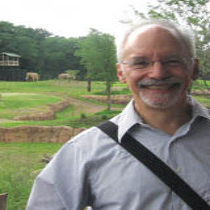Landscape Architecture for Landscape Architects › Forums › GENERAL DISCUSSION › Mobile Tree Planter
- This topic has 1 reply, 6 voices, and was last updated 16 years ago by
 Rich Bensman.
Rich Bensman.
-
AuthorPosts
-
November 16, 2009 at 7:17 pm #172319
 Michael BarcelosParticipant
Michael BarcelosParticipantI am currently in a Community Design Senior Studio and focusing on a site design project in Aiken, SC. I came up with the idea to implement trees in mobile planter boxes in a park that can be moved to rearrange the space and change the shading patterns throughout the day. I was wondering if anyone knows of any projects that have used this concept before. The planter boxes would be on a track system, possibly using electromagnetism to move them. Any ideas or advice would be helpful!
November 16, 2009 at 8:37 pm #172326 Rich BensmanParticipant
Rich BensmanParticipantMaybe not quite what you are looking for, but a very cool project that incorporates moving trees:
http://www.dezeen.com/2008/11/30/moving-forest-by-nl-architects/
November 16, 2009 at 11:19 pm #172325 Fabio TorlaiParticipant
Fabio TorlaiParticipantThat´s a nice concept!!
I thought about it a little and came to a solution I may end using on my own final thesis for school: Use water channels as rails, the trees and shrubs would float on their boxes and be rearrangeable.
November 17, 2009 at 2:34 pm #172324 david maynesParticipant
david maynesParticipanthere’s a similar idea used for an urban plaza concept. The site and context was all about remediation and brownfield reclamation, with disturbance and succession being powerful themes. The trains served as both dynamic space-makers and metaphor. The appropriate solution when introducing the moving tree idea is to consider the place and cultural context. Good luck!
November 17, 2009 at 4:14 pm #172323 Michael BarcelosParticipant
Michael BarcelosParticipantThanks everyone for your insightful ideas. David, this treetrains graphic is very similiar to what I had envisioned for my park. Can you tell me who designed it so that I can cite them in my presentation? I will be sure to post a graphic of my presentation board in a few weeks!
November 17, 2009 at 6:01 pm #172322 david maynesParticipant
david maynesParticipantI did! It was a design element within my MLA-thesis…which dealt with ecological remediation systems, thematic planning, and the use of a succession model, both literal and metaphoric, for integrating the science of site decontamination, individual and collective engagement in physical and social processes of remediation, and development of a multi-process phytoremediation system as a formal and cultural layer in land re-manufacturing. Essentially, proposing post-industrial land reclamation as an opportunity for place-making, rather than an annoyance of redevelopment.
November 17, 2009 at 11:15 pm #172321 Rob HalpernParticipant
Rob HalpernParticipantAnd then there’s this:
November 19, 2009 at 7:16 pm #172320 Les BallardParticipant
Les BallardParticipantLove the video. Ents would go ape wouldn’t they?
I would like (or not) to see what would happen to the trees under major electronic acceleration and interview any resident squirrels to determine levels of disorientation. Would they still find their nuts?
More practically, mark north on trees before transplanting to containers then reorient at each location. Also, trees do better in company and with original soil so as to get stratified supportive mycellum. This means filling containers in layers. Where certain lesser species live with more major species the lesser tree gets shelter from the larger specie and fakes its hormones to link in with roots forming or infilling a kind of brain by virtue of these synapses while the soil is damp. So you can mix in, for example, oak and holly or beech and birch. (You can also add bushes and plants to recreate a multi layer woodland canopy and scallop aspects against the wind or ice storms.) As far as I know all pioneer species have the ability to fake major specie hormone as of course do the fungi that also link to root hairs. So you can have a natural mix of trees in a long narrow container provided the larger tree can take the shallowness. Species found in perma frost areas will abide a 3 foot depth of soil but this needs topping up and grit in the bottom is no bad thing. All containers must drain of course and so need (ball?) feet, legs or skids/wheels to make a gap and something suitable inside to stop the holes getting blocked. Waste lumps of foam are good but a deliberate roughcast ball in a round tapered hole might be considered like the balll in the neck of an old soda bottle. All containers have to be made with frost proof walls so a double thickness perhaps with insulation seems necessary. Mobile bowsers can be used to water containers from dawn filling from taps being the daytime activity. Some species might be made to weep or be pollarded early then irregularly to restrict height to a desired level and/or be coppiced as well as being allowed to provide a crop for fun, profit, wildlife, etc. So long containers will support life – like worms – better and move in one direction more easily. A central jockey wheel on a sub frame (providing the gap to allow drainage), like on a caravan, may aid turning by tractor before a straight tow.
You may want to ignore a lot I have put here as few will go for orientation or know about mycellum but, have fun.. .
Luv n Lite
Les Ballard
-
AuthorPosts
- You must be logged in to reply to this topic.


